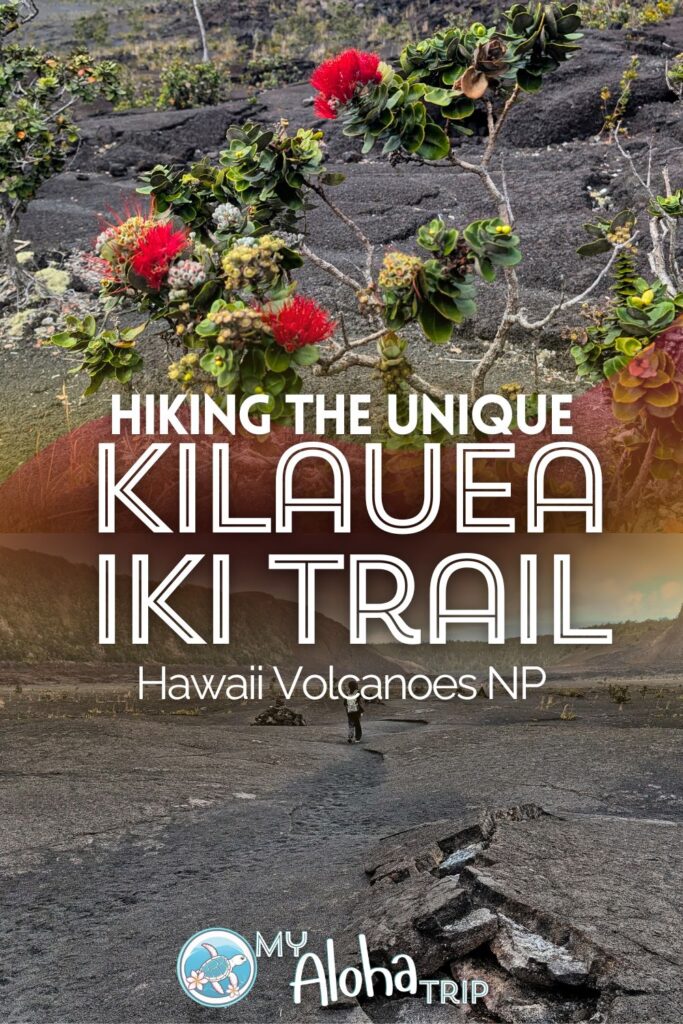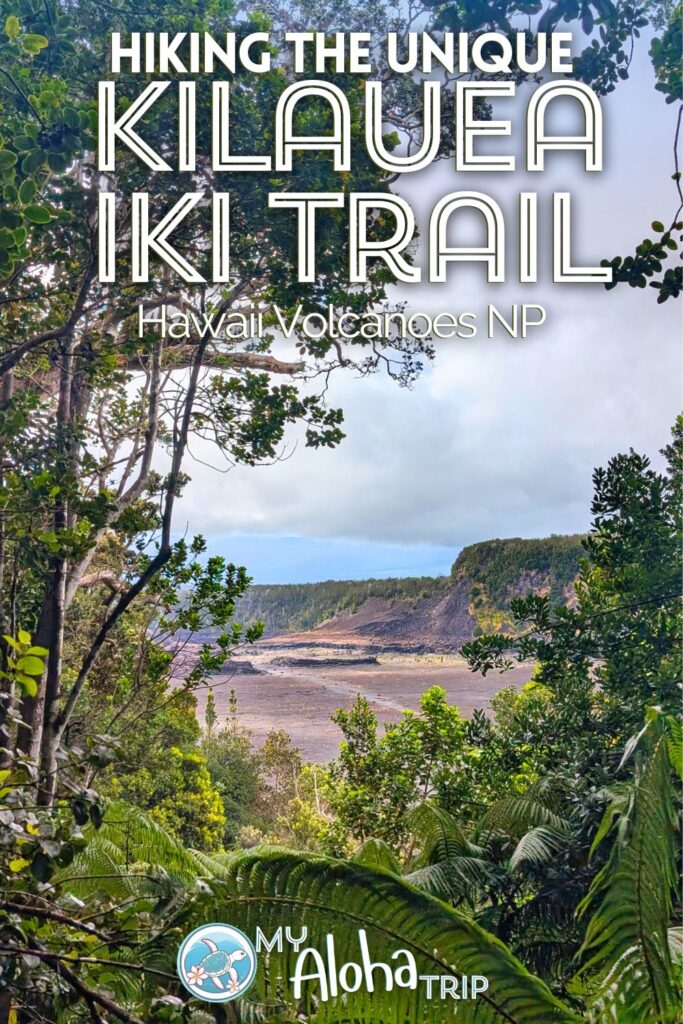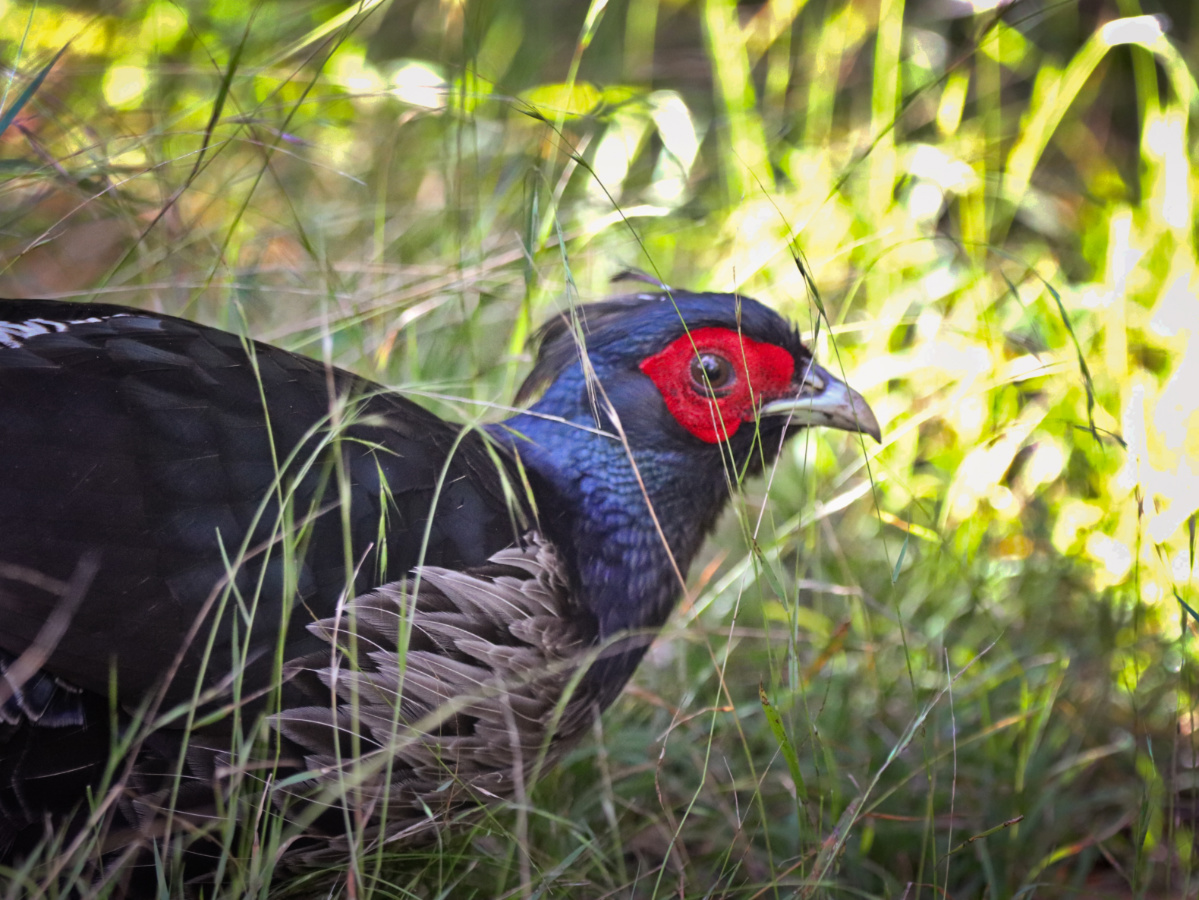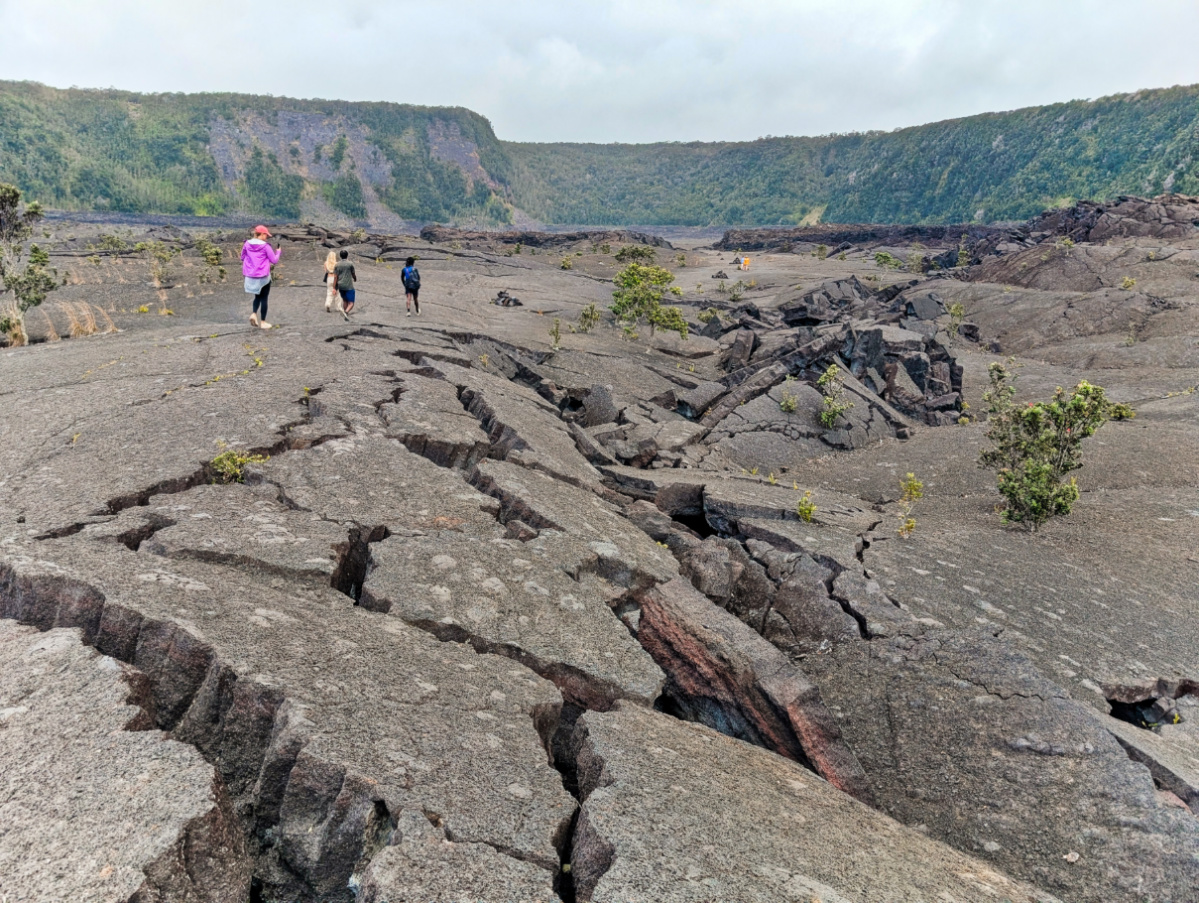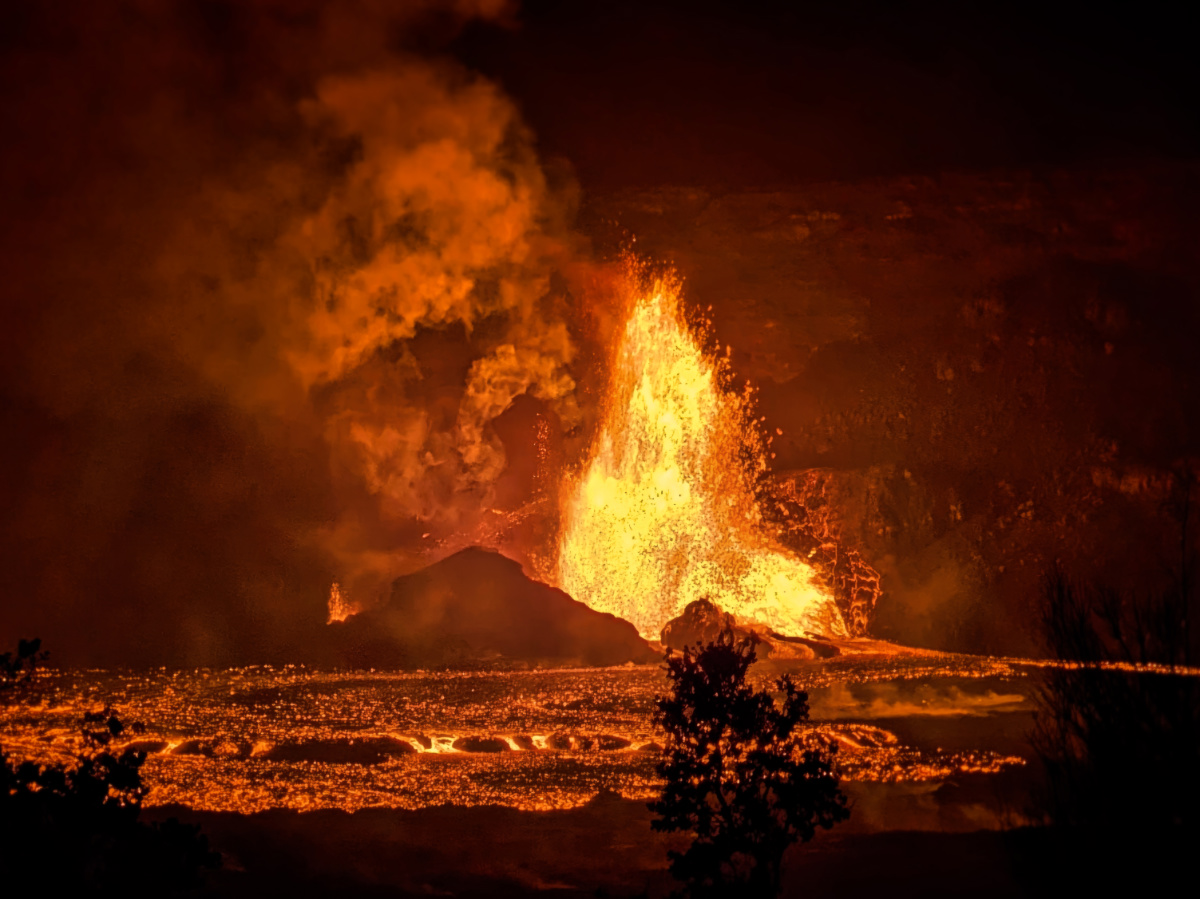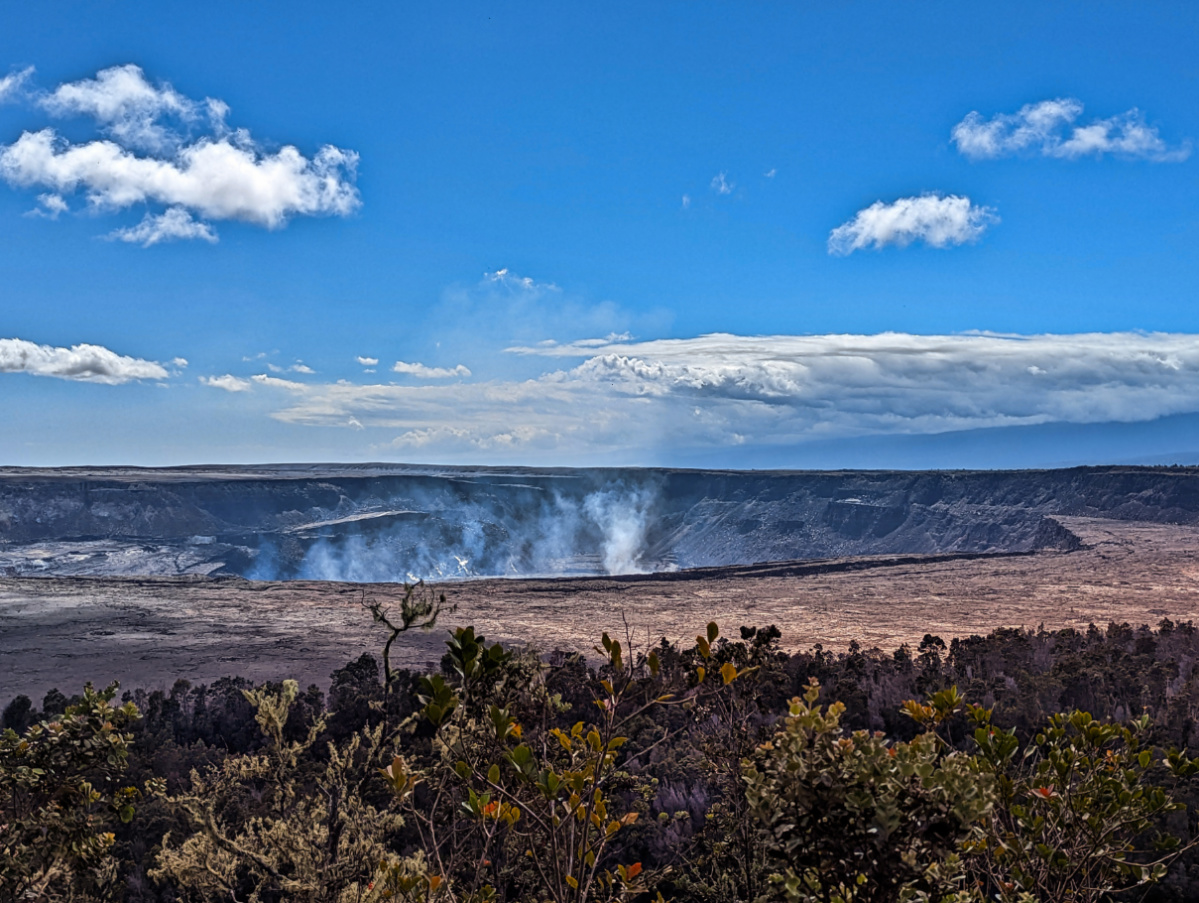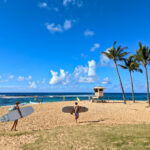Hawaii Volcanoes National Park has some really cool hikes and sights that are unlike anywhere else, and the Kilauea Iki Trail down into the crater is at the top of my favorite hikes. Even if you’re not big into geology, the Kilauea Iki Trail is really cool and not terribly difficult. It provides a unique view of the inside of the Kilauea crater (not the active part) and leaves you rather speechless.
Are you interested in seeing Hawaii Volcanoes National Park from a different POV or doing one of the most unique hikes in Hawaii? If so, then read on because hiking the Kilauea Iki Trail is for YOU! We’ve got the need-to-know information about this fun trail, including tips to make sure you can enjoy the experience (it’s kind of intense). If you have any questions about doing the hike or visiting Hawaii Volcanoes National Park, please leave a comment or send us a note. We’re always happy to share more and help you plan a great Aloha trip.

Why do the Kilauea Iki Trail Hike?
Before we get too much into it, the Kilauea Iki Trail does NOT lead to the most active lava spout within the mountain. The Halemaumau Crater in the Kilauea caldera is where most of the activity of Kilauea takes place. The Kilauea Iki Crater is actually rather separate from the primary geologic activity. When you’re hiking the Kilauea Iki Trail, you’re actually going down into the larger crate of the volcano as a whole, and then more specifically entering the Kilauea Iki area which was a beautiful valley until 1959 when an eruption in this part of the larger crater FILLED the valley with lava and the volcanic fountains were hitting 1000 feet in the air. The valley now had a 400 feet deep lava lake which since cooled and it’s now this awesome hiking destination.
When you start the Kilauea Iki Trail, you’re winding down the crater wall through the beautiful, lush, green jungle, surrounded by flowers and birds. By the time you get to the crater floor, it’s a completely different world and it’s barren. Even though the Kilauea Iki eruption was more than 60 years ago there is so little vegetation that’s been able to grow in the hardened lava lake that it feels like an absolute desert.
As you start to cross the Kilauea Iki Trail along the crater floor, you’ll notice how quiet it is, except for the wind. The porous lava, most of which is the pahoehoe lava, really absorbs sound and its eerie. I love it. If you ever wanted to go hiking and then feel like you’ve disappeared into a void without actually disappearing, this is an amazing way to feel that stark nothingness. It’s very moving. The actual hike across the crater floor isn’t very difficult and the things you’ll see are really cool. You follow the cairns (rock piles) past fissures and giant bubbles in the hard lava, and as you reach the end of the crater you’ll be able to take in the entirety of the desolation. Amazing.
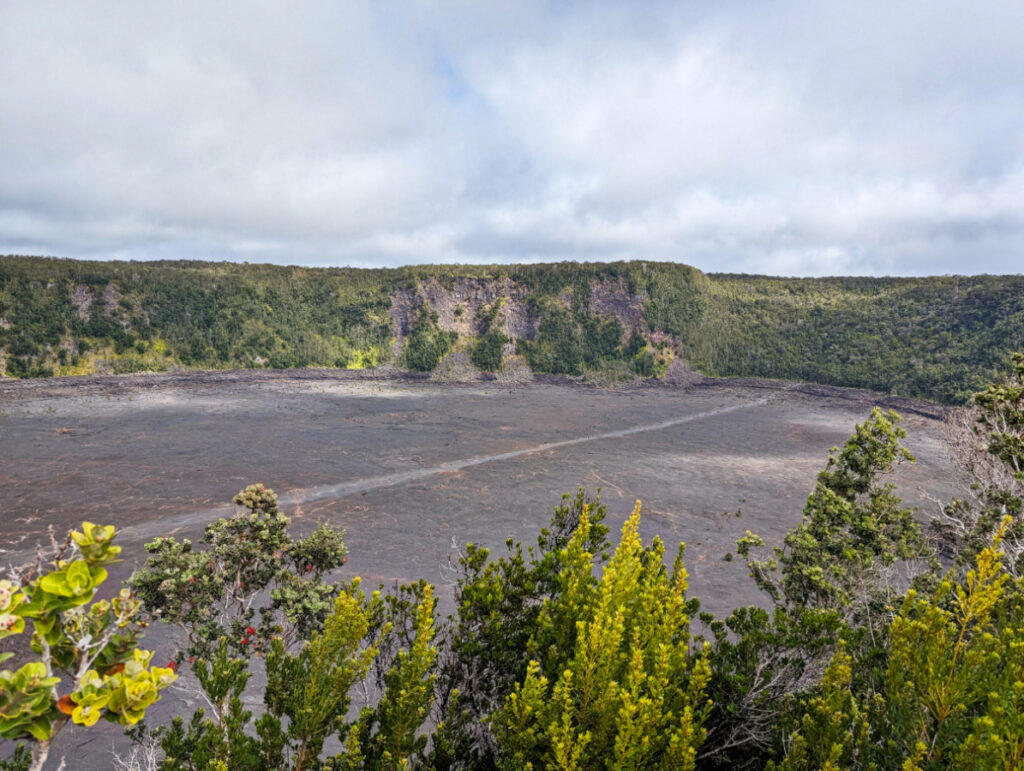
Tips for a Successful Kilauea Iki Hike
While the Kilauea Iki Trail isn’t the most difficult hiking you can do in Hawaii Volcanoes National Park, it will feel like a workout for some visitors. The trail down to the crater floor is not too rough, but if you have bad knees or unsure footing, you may want a hiking pole. This is not a difficult trail like the Kalalau Trail on the NaPali Coast, but it can feel strenuous if you’re not used to hiking.
Keep in mind that half of the trail is completely exposed. While the temperature up here is usually significantly cooler than down at sea level, like down at the Holei Sea Arch or the Pu’uloa Petroglyph Trail, when you’re hiking across the crater floor it can get toasty. If you’re lucky, you’ll catch a good breeze swirling through the crater when you do the Kilauea Iki hike, but don’t count on it. Even if it’s a little cloudy, that bed of lava stores the heat.
When you are completing the part of the trail that crosses the crater floor, pay attention to the types of lava you see and the variation in color. You can see how some of the lava flow ended up stacking up against itself making some areas of a’a lava, but most of it is the more smooth pahoehoe lava. If you look carefully as you hike you may even see some areas where there’s what looks like obsidian flecks. While you won’t find obsidian flows or even large pieces of obsidian, there’s a bit of the shinier rock layered throughout the Kilauea Iki area.
NOTE: do not take rocks from Hawaii Volcanoes NP, Haleakala NP or other cultural sites. Heck, talk to anyone about removing black sand from Punaluu Black Sand Beach or Waianapanapa State Park and they’ll tell you all about the beliefs associated with removing these special wonders.
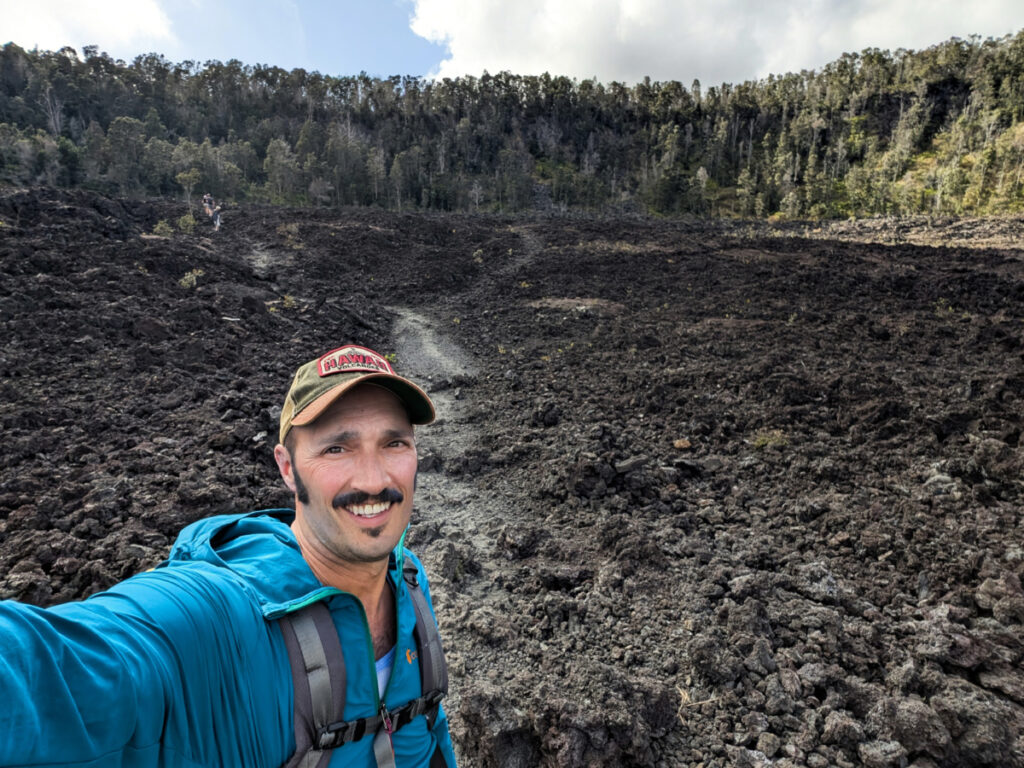
Is the Kilauea Iki Trail a Round Trip Hike?
You can do the Kilauea Iki hike as an out and back or as a round trip hike. If you do the full loop, it’s a four mile hike. The best way to approach this hike is as its own thing versus adding it to a longer day of hiking. For a loop, you can hike the full Kilauea Iki Trail to the bend after the crater which then takes you back up via a different path and connects you to the Crater Rim Trail, and hence back to where you parked. You can pair it with the Byron Ledge and Devastation Trails to make a near-loop that’s even longer, but then you need to coordinate getting collected at the end of the trail.
I like this as an out and back trail (still around 4 miles to complete). Allow yourself two hours or more to complete the Kilauea Iki Trail, no matter which route you take. If you are in a hurry you can do it faster, but I think that between the elevation changes and the variable footing, taking your time is best.
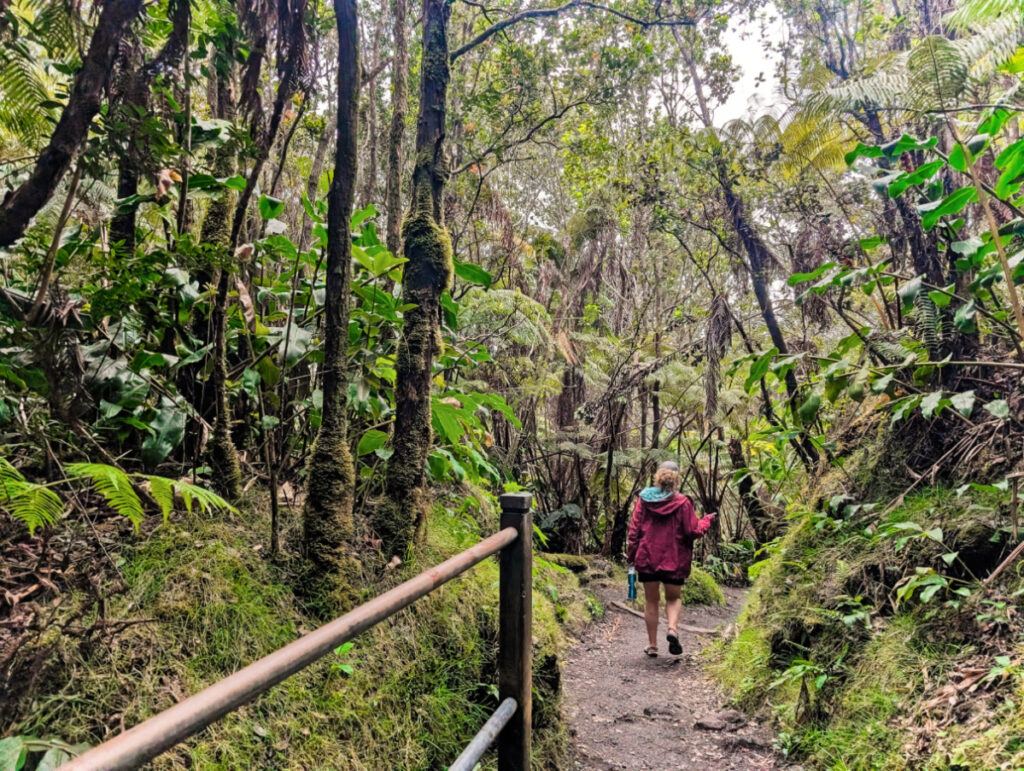
Being Prepared for Kilauea Iki Craters Hike
For the Kilauea Iki Trail, you’ll want sturdy shoes or close toed sandals. It’s not a slipper/flip flop trail at all, but you also don’t really need hiking boots. Just keep in mind that lava rock is sharp, even in its dusty or sandy form, so protect your feet for the hike. Also, I really like wearing long sleeve sun shirts when I’m hiking here or anywhere else in Hawaii. Despite having very dark skin, something about a long hike in direct Hawaiian sunlight always effects me and while I may not burn, it absolutely zaps my energy. I recommend a sunshirt, broad brimmed hat, sun block and maybe even an umbrella if you’re doing the Kilauea Iki Trail (or any of the most exposed hikes in Hawaii Volcanoes National Park).
Use your best judgement when it comes to bringing camera gear on the Kilauea Iki Trail. While the slopes down to the crater floor may have some beautiful vegetation and maybe even some apapane (red honeycreeper birds), the epic photography opportunities here are very different from doing the Keanakakoi Overlook trail or the Mauna Loa birding trail. I will say though, on the other side of Kilauea Iki, if you’re doing a portion of the Byron Ledge or Devastation Trail, you may get the chance to photograph tropicbirds, which are known to nest in the crater walls of Kilauea. There’s a rare sighting, but they are indeed around if you’ve got your binoculars or telephoto lens.
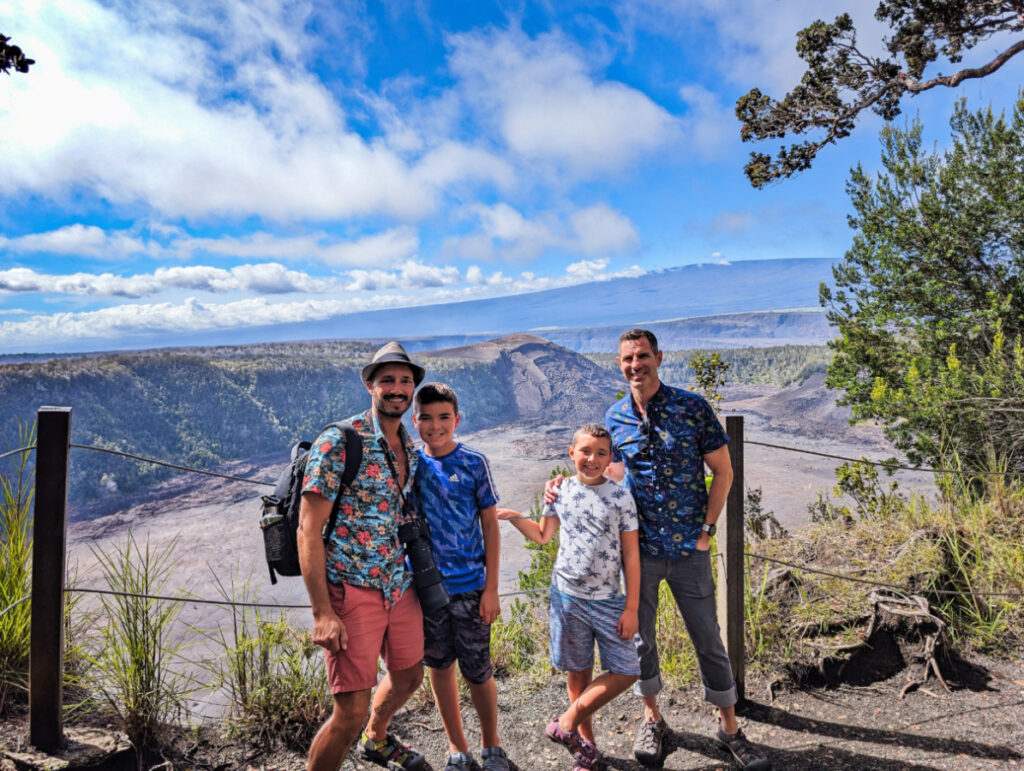
Parking for the Kilauea Iki Hike
The most difficult part of doing the Kilauea Iki Trail is actually the parking. At the trailhead there is parking on both sides of the road, but this is also the parking area for the Thurston (Nahuku) Lava Tube. A lot of people just do that hike though, which is very easy and fast, so if you’re lucky you’ll be able to grab one of those parking spots.
If you’re unable to score parking here at the main trailhead, you can go back towards the park entrance a little bit and park at the Kilauea Iki Overlook parking area. From here you can either head to the left (if you’re facing the crater) and follow the Crater Rim Trail along until it goes down the Kilauea Iki Trail, or you can go to the right, following the signs for the Crater Rim Trail and continue that way for around a mile or so until it meets up with the Kilauea Iki Trail at the end of the Crater. You have options!
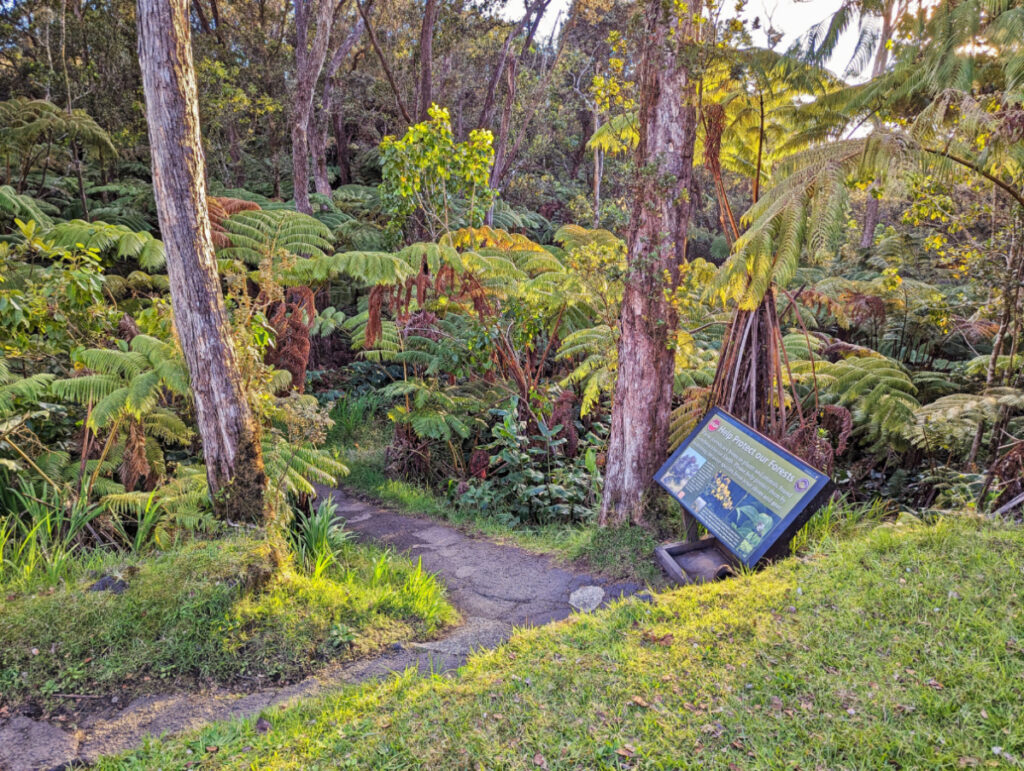
More About Hawaii Volcanoes National Park
Hawaii Volcanoes National Park is my FAVORITE of all the National Parks I’ve been to (including Denali National Park in Alaska) so I have lots to say and share about visiting and how to have the best experiences here. Whether you are just stopping in on your drive between Hilo and Kailua-Kona or you are staying in the park during an epic Kilauea eruption, visiting and enjoying the park can be a part of any trip to the Big Island of Hawai’i.
Have you gotten to really dig into Hawaii Volcanoes National Park or are you just scratching the surface? However you want to plan your visit, there are always things to do, even when there’s not an eruption at the moment. Check out our ideas for enjoying the park and experiencing Tūtū Pele and all her wonders.
I hope you’ll consider doing the Kilauea Iki hike. It’s one of the best trails in Hawaii Volcanoes National Park and is the perfect amount of challenge, scenery and fun. If you have any other questions about hiking here or putting together a trip to the Big Island of Hawai’i, please leave a comment or send us a note. We’re always happy to share more and help you plan a beautiful Hawaii trip. Aloha!
